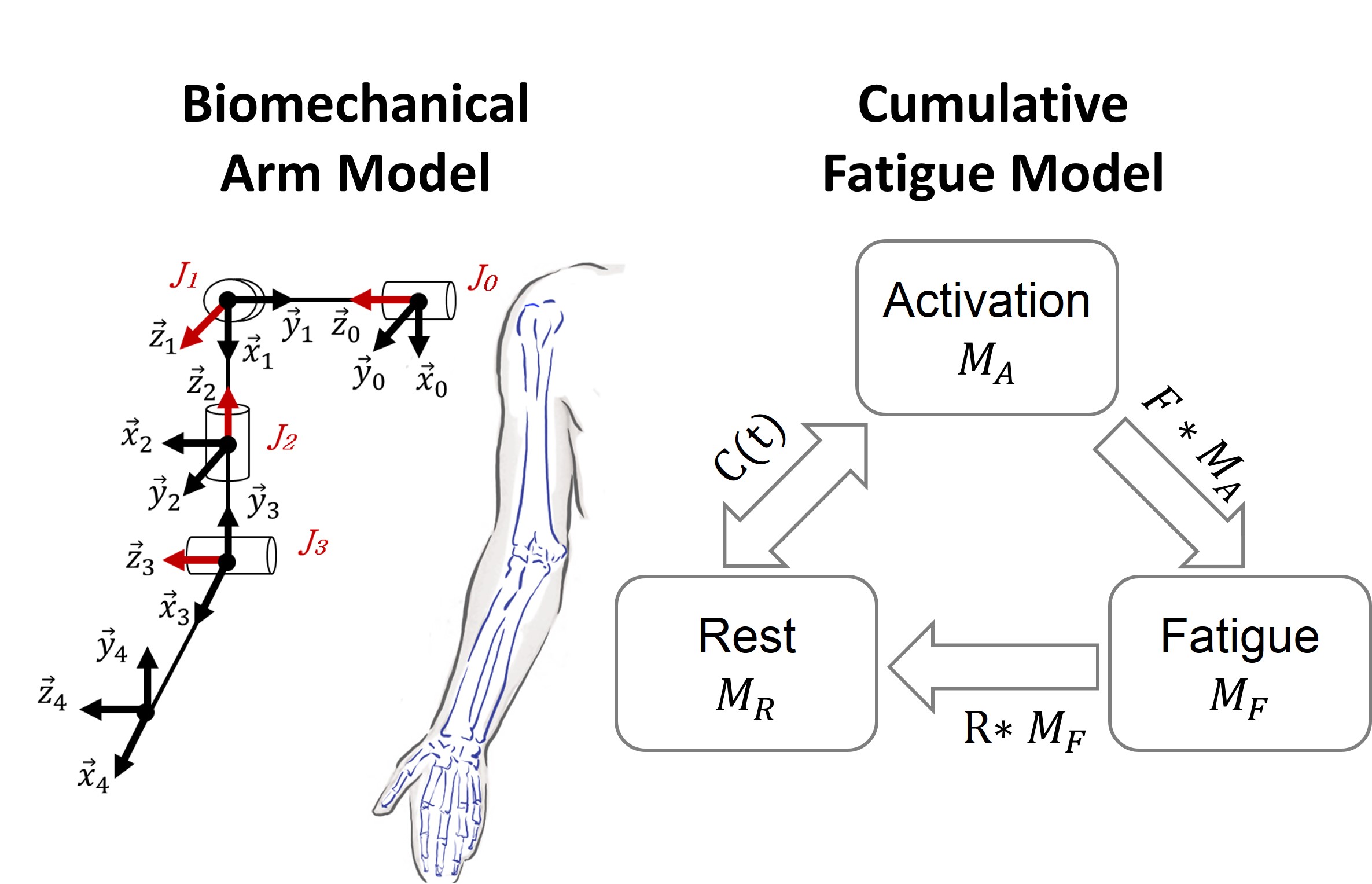
Estimating subjective fatigue based on cumulative fatigue model and biomechanical upper limb analysis in mid-air interaction. Left: sketches of mid-air pointing tasks performed in the experiments. Middle: biomechanical model of the upper limb and three-compartment muscle (TCM) model. Right: results of the leave-one-out cross-validation of the TCM model across all subject data (green-upward/downward triangles: upper/lower bound of ground-truth, blue circles: averaged ground-truth, black crosses: TCM estimates, red circles: averaged TCM estimages, orange/purple circles: averaged existing fatigue metric).
Quantifying cumulative arm muscle fatigue is a critical factor in understanding, evaluating, and optimizing user experience during prolonged mid-air interaction. A reasonably accurate estimation of fatigue requires an estimate of an individual’s strength. However, there is no easy-to-access method to measure individual strength to accommodate inter-individual differences. Furthermore, fatigue is influenced by both psychological and physiological factors, but no current HCI model provides good estimates of cumulative subjective fatigue. We present a new, simple method to estimate the maximum shoulder torque through a mid-air pointing task, which agrees with direct strength measurements. We then introduce a cumulative fatigue model informed by subjective and biomechanical measures. We evaluate the performance of the model in estimating cumulative subjective fatigue in mid-air interaction by performing multiple cross-validations and a comparison with an existing fatigue metric. Finally, we discuss the potential of our approach for real-time evaluation of subjective fatigue as well as future challenges.
Downloads:
We released the fatigue model implementation and the biomechanical upper limb analysis [GitHub Link].

